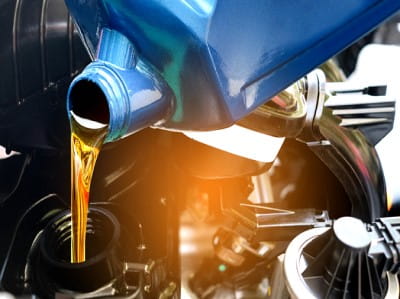John Townsend
Public Relations Manager, DC
O: (202) 481-6820 (ext. 4462108)
C: (202) 253-2171
jtownsend@aaamidatlantic.com
0
WASHINGTON, D. C. (Wednesday, September 18, 2019) –– Don’t let the calendar fool you. The highway construction and maintenance season is still in high gear. It seems the whole of the Washington metro area is one big “cone zone.” The beehive of activity in construction zones will continue well into autumn and beyond, including along the Chesapeake Bay Bridge, starting next Tuesday, September 24. If everyone cooperates, a simple yet counterintuitive merging maneuver, christened the “zipper merge,” promises to untangle traffic jams, defuse road rage, and improve safety in work zones and heavy traffic. The seemingly ubiquitous work zones and mega-projects dotting the region’s landscape can emerge as the very avatars of “abnormally large traffic backups,” and spawn crashes both inside and “outside work zones.” If everyone uses the zipper merge method, it could reduce delays in work zones by up to 40%, studies show.
Work zones, with the attendant “detours, dust and delays,” contribute to as little as 10%, to as much as nearly a quarter, of all non-recurring traffic delays in the Washington metro area, which already suffers from the third-worst congestion in the nation. Dangerous lane switching and other bad driving behaviors in work zones could cause even more congestion and back-ups, and trigger crashes, officials warn. Instead of switching lanes as quickly as they spot the first dynamic message sign indicating lane closures ahead in a work zone, area motorists are urged to use the “zipper merge” technique in roadway construction zones. To do otherwise only invites travel delays, traffic congestion and frustrations, and reduces safety in work zones.
“Using the ‘zipper merge’ technique when it is safe to do so in construction zones will keep traffic moving, and help reduce crashes and congestion,” explained Kurt E. Gray, Director, Driver Training, AAA Mid-Atlantic. “When it comes to merging in heavy traffic conditions, most drivers do it wrong by merging too early. Study after study shows the ‘zipper merge’ is the safest and most efficient way to merge in work zones and heavy traffic. To do so, use all lanes fully until you reach the end of the lane, then alternate into the open lane. It does take some cooperation, but it maximizes road space and helps keep things moving.”
Nationwide, in 2018 “state and local governments spent approximately $91.4 billion” on highway and street construction projects. The price tag for the two-year project to rehabilitate the Bay Bridge’s westbound span is $27 million. It will make the commute more complicated, “due to no two-way traffic operations,” as of September 30. During September and October, area motorists must brace themselves for ongoing construction and traffic alerts along at least 18 major construction sites in Northern Virginia, nine major construction projects in Prince George’s County, eight active construction projects on bridges and roads in Montgomery County, and re-pavement projects along 88 miles of roadway in the District of Columbia. Work zones are the “second largest contributor” to non-recurring delay congestion in the nation and the “speed-flow-delay paradox” across the Washington metro area. A small change in thinking can make a huge difference in traffic.
“Some skeptics say good luck trying to ‘teach longtime drivers new tricks.’ That is to say, convincing
motorists to change their deep-dyed habits of merging early. Though a tad controversial, the overarching goal of the ‘dynamic lane change’ or the ‘late merge’ technique is improving traffic flow and enhancing traffic safety in work zones and heavy traffic,” said John B. Townsend II, AAA Mid-Atlantic’s Manager of Public and Government Affairs. “Research tells us fifty percent or more of all traffic delays across the Washington metro area is ‘due to non-recurring incidents,’ ranging ‘from a flat tire to an overturned hazardous material truck (25% of congestion), weather (15% of congestion), and work zones (10% of congestion).’”
Perhaps nothing irritates motorists queuing and waiting in long lines in work zones more than impatient or self-centered drivers, who are sometimes called “traffic cutters,” jumping ahead or cutting in line in front of other drivers, or speeding by in the open lane to the point of no return in work zones. Left unchecked, this boorish driving behavior also increases travel time, engenders bigger back-ups and bottlenecks, and compromises the safety of drivers and highway construction crews in work zones, cautions AAA.
Zipper merging “can reduce delays by up to 40 percent in heavily congested areas,” according to studies conducted by the Colorado Department of Transportation. In addition to enhancing work zone safety, the “zipper merge” method, which derives its name from “teeth in a zipper,” also promises to “ease traffic and make driving through work zones go quicker.” Drivers using the “zipper merge” method should continue to occupy all lanes until they reach the “taper point” in the work zone, and then take turns merging into the open lane in an orderly and alternating fashion. However, if there is no bottleneck and an early merge makes sense, feel free to do so. Drive consistently. Don’t rush ahead, only to slam on your brakes later.
Ironically, it gives a new meaning to the idiom “traffic cutter,” because, if properly used by drivers, the dynamic lane merge concept “will help mitigate traffic while reducing the chances of road rage,” according to researchers at the Texas A&M Transportation Institute (TTI). By dint and force of habit, many drivers immediately jump into the other lane after seeing orange cones in work zones. It only makes traffic worse and heavier, studies by the Virginia Transportation Research Council show. Merging early or “cutting in line” in heavy traffic and work zones can also result in “unexpected and dangerous lane switches, serious crashes and road rage,” warns AAA. Asphalt now covers more than 94% of paved roads in the United States. It is estimated there are at least “30 thousand paving projects” taking place on interstates, freeways, and multi-lane roadways in urban and rural areas across the country each day. Here are some tips for merging in work zones.
-
Slow down and obey the speed limit. Speed was a contributing factor in 29% of work zone deaths in 2017.
-
Pay attention. Conditions could change quickly. Plus, 25% of fatal work zone crashes are rear-end crashes.
-
Give heavy vehicles and equipment a wide berth and room to adjust to conditions.
-
Move over, if possible, for workers.
-
When ready to move over, signal your intent and use the zipper merge approach in an alternating fashion.
-
If, however, a lane closure is due to a crash or breakdown, reduce your speed and move over as soon as possible to avoid endangering emergency workers and/or tow truck operators.
-
Drop it, the phone, that is, and drive.
“The Big Time Roadwork” and road paving season typically begins in early May and concludes by October. This explains, in part, why most fatalities in work zones occur “during the months of May to September,” law enforcement and transportation officials and AAA Mid-Atlantic caution. Nationwide, “around 10 percent of highway congestion results from delays in work zones, leading to an estimated annual loss of $700 million in fuel costs alone,” warns the Federal Highway Administration (FHWA). Major road and bridge projects can last several months, or like the Great Wall of China, several years, and may involve significant delays, “an endemic component of commuting life in the Washington metro area.” It is a fact of life: “Lane closures in work zones along freeways produce bottlenecks,” notes the National Work Zone Safety Information Clearinghouse. “These bottlenecks are problematic due to loss of capacity and excessive lane changes, which impact the facility represented by operational levels of service, emissions, and travel time.”
Follow us on Twitter: @AAADCNews
Like us on Facebook: AAA Mid-Atlantic News
Washington, D.C. Mailing Address:
1405 G Street NW
Washington, DC 20005
AAA provides automotive, travel and insurance services to 59 million members nationwide and over 80,000 members in the District of Columbia. AAA advocates for the safety and mobility of its members and has been committed to outstanding road service for more than 100 years. The not-for-profit, fully tax-paying member organization works on behalf of motorists, who can now map a route, find local gas prices, discover discounts, book a hotel and track their roadside assistance service with the AAA Mobile app for iPhone, iPad and Android. For more information, visit https://aaa.com
Ragina C. Ali
Public Relations Manager, MD
O: (410) 616-1900 (ext. 4361152)
C: (443) 465-5020
RAli@aaamidatlantic.com







